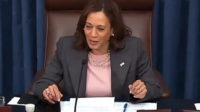
Construction obviously plays a key role in this examination of the the American Recovery and Reinvestment Act—better known as the stimulus. This new book tells the story of how the largest economic recovery plan in U.S. history was created and executed, how it affected the American public and what it accomplished.
The depth of research and first-person interviewing by Michael Grabell, a reporter for the non-profit investigative news service ProPublica, is evident.
Among other efforts, he recounts a visit to a stimulus-funded New Jersey bridge renovation site and interviews with its project engineer and a union carpenter. The latter told Grabell that he would have remained unemployed and become homeless without work on this project.
On some points, Grabell's book does not break new ground for construction participants who already have experienced the ups and downs of stimulus-funded projects and followed reports in ENR and other trade publications. His discussion of the emphasis on quick, "shovel-ready" projects is nothing new but still worth reading three years later.
The book provides a one-stop resource for data on stimulus spending and provides many examples of incongruities in aligning funding, politics and real needs—the "tension between the timely and the transformative," as Grabell puts it.
The book tries to maintain its objectivity on whether the stimulus program worked or not. Grabell explores the bad side, citing as an example a county engineer in Washington whose private land holdings may have benefitted from a stimulus-related project and notes some abuses of disadvantaged-business programs.
But he says the funding for road and transit projects "created and saved nearly 100,000 direct on-project jobs."
In the end, Grabell raises some key questions. "The Recovery Act failed to live up to its promise not because it was too small or because Keynesian economics is obsolete, but because it was poorly designed," he concludes. "Could the administration have sold the stimulus differently or could Congress have designed a more effective stimulus?"
One skeptic we know criticized the lack of vision behind the stimulus, calling it the "world's biggest sidewalk repair project."
And as a reviewer noted, the book's value is not "its conclusions about the stimulus, but rather the sense of missed opportunities one is left with. There is an impression that too much was left undone in this country."
"Money Well Spent? The Truth Behind the Trillion-Dollar Stimulus" by Michael Grabell, 391 pages, Public Affairs Press, 2012






Post a comment to this article
Report Abusive Comment